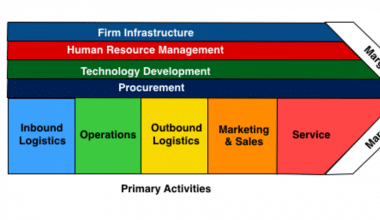Aspects of the diffusion of innovations in research and practice paradigms are applicable to the complex environment of health care for both explanatory and interventional reasons. Few social science ideas have as long a history of conceptual and empirical research as the diffusion of innovations. The resilience of this theory stems from the many disciplines and domains of study in which diffusion has been examined, as well as the international richness of these studies and the diversity of new ideas, practices, programs, and technologies that have been the subjects of diffusion research. In this article, we’ll explain Rogers’ theory of the diffusion of innovations, giving examples where necessary.
What Is The Diffusion of Innovations Theory?
The diffusion of innovation theory is a hypothesis that describes how new technological and other advancements spread across societies and cultures, from their introduction to widespread adoption. The theory of the diffusion of innovations seeks to explain how and why new ideas and practices are adopted, with timelines potentially spanning long periods of time.
The manner in which innovations are communicated to various segments of society, as well as the subjective opinions associated with the innovations, are important factors in the rate at which diffusion—or spreading—occurs. This theory is frequently referred to in the marketing of new products. Thus, it is important to understand when developing market share.
The Diffusion Of Innovations Theory Explained
E.M. Rogers, a communication theorist at the University of New Mexico, developed the theory of the diffusion of innovations in 1962. It explains the passage of an idea through stages of adoption by different actors by integrating previous sociological theories of behavioral change. The key innovations in the theory of innovation of diffusion, as postulated by Rogers, are:
- Innovators: Those who are willing to take risks and are the first to try new ideas.
- Early adopters: Individuals who are interested in experimenting with new technologies and determining their utility in society.
- Early majority: Those who are part of the general population and pave the way for the use of innovation within mainstream society.
- Late majority: A subset of the general population that follows the early majority in adopting innovation as part of their daily lives.
- Laggards: Individuals who lag behind the general population in the adoption of innovative products and new ideas. This is primarily due to their aversion to risk and rigidity in their methods. The spread of innovation through mainstream society eventually makes it hard for them to go about their everyday lives (and employment) without it. As a result, people feel compelled to start utilizing it.
The ratio of the rural to urban population in a society, the level of education in the society, and the extent of industrialization and development are all factors that influence the rate of innovation diffusion. Adoption rates—the rate at which members of a society accept a new innovation—are likely to differ between societies.
Adoption rates for various forms of innovation varied. Because of cost, accessibility, and experience with technological change, a civilization may have adopted the internet faster than the automobile.
Diffusion of Innovations Theory Examples
The theory of diffusion of innovations was developed in the mid-1900s. Since then, most new technologies in human progress have followed a similar path to widespread adoption.
Marketers frequently employ the diffusion of innovations theory to promote the adoption of their products. In such cases, marketers typically find an early group of people who are enthusiastic about the product. These early adopters are in charge of evangelizing its utility to the general public.
One of the examples that illustrate the diffusion of innovation theory is Facebook. It began as a product for students and professionals in educational institutions. As students’ use of social media sites grew outside of school, they spread to mainstream society and across borders.
Another of a such example where the theory of diffusion of innovations is applied is the development of public health programs. Again, a group of people is picked to be early adopters of new technology or activity and to raise awareness among others. However, cultural barriers frequently stymie the viability of such programs.
Read Also: OPPORTUNITY COST: How to find Opportunity Cost
Rogers’ Diffusion Of Innovation Theory
The process of adopting new innovations has been studied for over 30 years, and Rogers describes one of the most common adoption models in his book, Diffusion of Innovations. The model has served as a basis for much research from a wide range of fields. Dooley (1999) and Stuart (2000) named several of these fields. They include political science, public health, communications, history, economics, technology, and education. They further described Rogers’ theory as a widely utilized theoretical framework in the field of technological diffusion and adoption. Rogers’ diffusion of innovations theory is most suited to studying technology adoption in higher education and educational settings. Because much diffusion research involves technological innovations, Rogers frequently used the terms “technology” and “innovation” interchangeably.
“A technology,” according to Rogers, is “a design for an instrumental activity that decreases ambiguity in the cause-effect linkages involved in accomplishing the desired end.” It is made up of two components: hardware and software. Hardware is defined as a tool that implements technology in the form of a material or physical item. On the other hand, the software is defined as the tool’s information base.
Because software (as a technological advance) is difficult to see, its adoption is sluggish. Adoption is a decision to make full use of an innovation as the best course of action available. On the other hand, rejection is a decision not to accept innovation. Rogers defines diffusion as “the process by which an innovation is conveyed through certain channels among members of a social system over time.” According to this definition, the four key components of innovation diffusion are innovation, communication channels, time, and social systems.
Read Also: PARADIGM SHIFT: Paradigm Shift in Business
Four Key Elements in the Diffusion of Innovations Theory
#1. Innovation
Rogers provided the following definition of innovation: “An innovation is an idea, practice, or project that an individual or other unit of adoption perceives as novel.”. Innovation may have been invented a long time ago, but if people perceive it as new, it may still be considered an innovation. The novelty of adoption is more closely related to the three steps of the innovation-decision process (knowledge, persuasion, and decision).
Furthermore, Rogers asserted that there is a lack of diffusion research on technology clusters. “A technology cluster,” according to Rogers, “consists of one or more distinguishable elements of technology that are perceived as being closely interrelated.” ” Uncertainty is a significant barrier to the adoption of new innovations.” “The consequences of innovation can be unpredictable. “”Consequences are the changes that occur in an individual or a social system as a result of the adoption or rejection of an innovation.” Individuals should be informed about the advantages and disadvantages of innovation in order to be aware of all of its consequences. Furthermore, Rogers asserted that consequences could be categorized as desirable vs. undesired, direct versus indirect, and anticipated versus unexpected.
#2. Channels of Communication
Communication channels are the second component in the diffusion of innovations process. Communication, according to Rogers, is “a process in which people create and share knowledge with one another in order to attain a shared understanding.” This communication takes place via channels between sources. According to Rogers, “a source is a human or an entity that originates a message.” A channel is a path that a message takes from its origin to its destination”. According to Rogers, diffusion is a type of communication that includes the following communication elements: an invention, two individuals or other units of adoption, and a communication channel.
Two communication routes are mass media and interpersonal communication. Mass media channels include mass media such as television, radio, and newspapers. Interpersonal channels, on the other hand, involve two-way communication between two or more people.
Diffusion
On the other hand, diffusion is a profoundly social process that requires interpersonal communication relationships. As a result, interpersonal channels have a greater ability to generate or change strong attitudes held by an individual. Communication in interpersonal channels may have a homophily characteristic. This is “the degree to which two or more individuals who interact are similar in certain attributes, such as beliefs, education, socioeconomic status, and the like.” However, the diffusion of innovations requires at least some degree of heterophily. That is, “the degree to which two or more individuals who interact are different in certain attributes.” Indeed, “one of the most distinguishing challenges in the diffusion of innovations is that the participants are often extremely heterophyllous.”
Communication channels can also be classified as local or cosmopolitan. These communicate between members of a social system and outside sources. While interpersonal channels can be either local or global, practically all mass media channels are global. Because of the features of these communication channels, mass media and cosmopolite channels are more relevant at the knowledge stage of the innovation-decision process, whereas local and interpersonal channels are more important at the persuasion stage (Rogers, 2003).
#3. Time
According to Rogers (2003), most behavioral research ignores the time factor. He claims that incorporating a time dimension into diffusion studies demonstrates one of their merits. The temporal dimension is present in the innovation diffusion process, adopter classification, and adoption rate.
#4.The Social System
The social system is the final stage of the diffusion process. Rogers described the social system as “a collection of interconnected units engaging in collaborative problem solving to achieve a common purpose.” According to Rogers’ theory, the diffusion of innovations is influenced by the social structure of the social system because it occurs in the social system. Structure, according to Rogers (2003), is “the patterned groupings of the components of a system.” He went on to say that the nature of the social system influences people’s innovativeness, which is the primary criterion for defining adopters.
Why Is The Theory of Diffusion of Innovations Relevant in Infection Control?
Scientific research and innovation play critical roles in infection prevention and control. However, many important advances are typically underutilized in everyday clinical settings. Based on a long heritage of research across various disciplines, diffusion of innovations theory provides an important framework for understanding and bridging the gap between ideal and actual usage of evidence-based practices in healthcare settings.
As the demand for more effective, efficient, and safe health care grows, it is likely that even more emphasis will be placed on quickly converting infection prevention and control discoveries into suitable clinical usage. Hospital epidemiologists and infection preventionists play critical roles in this translation or implementation process. Thus, a fundamental understanding of the concepts and methods from the diffusion of innovations theory and the emerging field of implementation science may help ensure future success in the ongoing quest to reduce healthcare-associated infection.
Hospital epidemiologists and infection preventionists may also contribute to the advancement of knowledge in implementation science and, as a result, affect improvements in healthcare quality more broadly.
Who proposed theory of innovation?
Joseph A. Schumpeter proposed the Innovation Theory of Profit, which holds that successful entrepreneurs can increase their company’s bottom line by introducing new and novel products and services.
What are the strengths of diffusion of innovation theory?
The diffusion of innovation theory’s adaptability is one of its greatest strengths. Numerous studies in various fields have used the theory as a framework, and its general applicability has been confirmed by consistent findings in fields as diverse as journalism and health communication.
What’s wrong with the diffusion of innovation theory?
Adopters will often fall into different categories for different innovations, which has led to the common criticism that many people misunderstand the Diffusion of innovations theory and think that innovativeness is a personal characteristic.
What factors influence diffusion of innovation?
A marketer’s ability to influence the rate of innovation’s spread and adoption is limited by forces beyond their control, including, but not limited to, societal and cultural norms, technological and legal constraints, and even the preferences of individuals, as revealed through psychological and demographic factors.
What is the most important feature of the diffusion of innovation theory?
In the theory of the diffusion of innovations, the idea of peer networks plays a crucial role. Adoption of innovation begins to “take off” once it reaches a critical mass under the guidance of opinion leaders, who are often innovators and early adopters.
In Conclusion,
The diffusion of innovations in the research and practice paradigm provides a ready set of concepts and methodologies that may be utilized to explain individual and organizational receptivity to healthcare policies and practices. Diffusion principles can also be used to expedite the acceptance of health innovations and increase their reach.
Frequently Asked Questions
What are the 5 stages of the diffusion theory?
The 5 stages of the diffusion theory are awareness, persuasion, decision, implementation, and continuation.
What is diffusion theory?
Diffusion theory is the theory concerned with the spread of innovation through a population.
Why is the diffusion of innovation theory important?
The diffusion of innovation theory explains the rate at which a new product or service is adopted by consumers. Thus, the theory assists marketers in understanding how trends emerge. It also assists corporations in determining the possibility of success or failure of their new product introduction.
Related Articles
- INNOVATION STRATEGY IN BUSINESS WITH DETAILED EXAMPLE
- DEFINE YOUR BUSINESS: 7 Ways to Define you and Define your Business
- Interpersonal Communication: Meaning & 10 Must-Have Workplace Skills
- APPLE BRAND AND LOYALTY: Creating a Brand the Apples Way
- The Product Life Cycle Theory: Guide to the Stages & Examples






